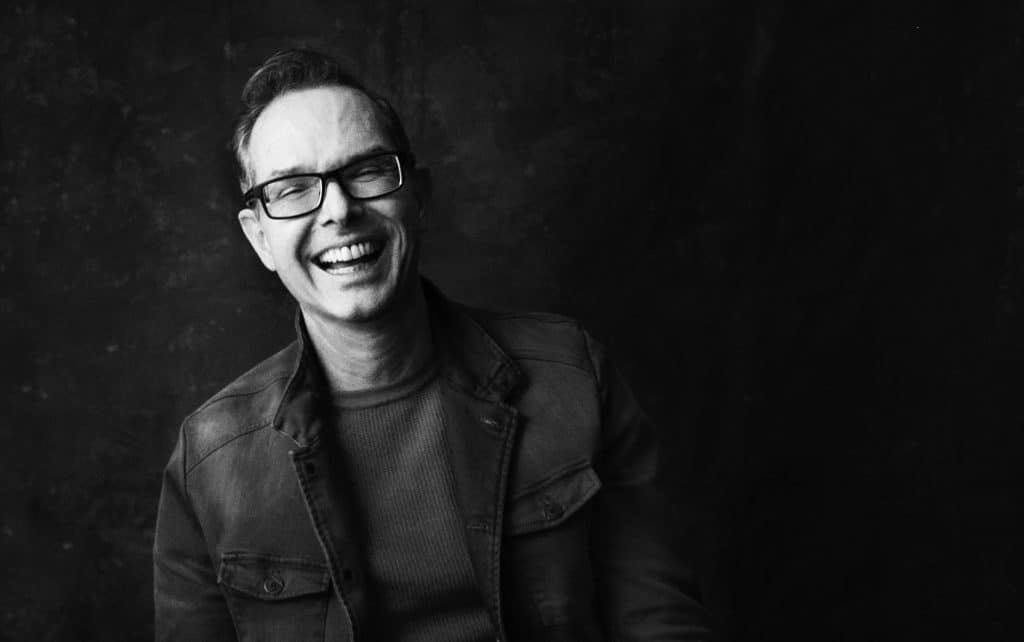
Did Mikao Usui base his teachings on Kaji?
Kaji is a practice within Japanese esoteric traditions which is about enlightenment, healing, initiation, blessing, empowerment, and often is performed for a person who is not physically present.
Within the system of Reiki we see the same elements: enlightenment, healing, initiation, blessing, empowerment, and something which is called in the modern system of Reiki “distance” healing and is performed for a person who is not physically present.
Kaji for Self
One beautiful translation of kaji 加持 is given by Kukai: “Ka is the sun of the Buddha reflected in the water of the mind of all beings. And ji means the water of the practitioner’s mind experiencing the sun of the Buddha.”
Another wonderful translation of kaji is by Ryuko Oda: “Kaji (Sk: adhisthana), is the transference of the Buddha’s power or grace which inspires a sacred peace of mind and a strengthening of the life force.”
In other words, kaji is about realizing that you and Buddha are one and the same, which is called nyū ga gan yū -入我我入
In kaji, the main Buddha with whom you realize union is Dainichi Nyorai – the cosmic Buddha, often also translated as “The Great Illuminating One” or “Life Force That Illuminates the Universe.” Or as Ryuko Oda points out, “Dainichi Nyorai personifies the essential nature of the universe and also symbolizes the wisdom and compassion which allows us to realize the true world of our mind.”
It is interesting to note that in Shinpiden Reiki Level III of the system of Reiki, you learn a mantra and symbol called Dai Kômyô (lit: Great Bright Light) which is traditionally linked to Dainichi Nyorai.
“Usui Sensei called Shinpiden students into his room one by one and and he taught them the three Kanji of Dai Kômyô. This information comes from an Aikido Shihan whose deceased grandfather learned Reiki from Usui Sensei.” – Hiroshi Doi
So was Mikao Usui pointing out that through practicing the mediations taught within the system of Reiki we can realize this unification with Dai Kômyô – the Great Bright Light – which in essence is nothing different than Dainichi Nyorai, the essential nature of the universe which is wisdom and compassion?
In fact, we can even see this wisdom and compassion pointed out within the precepts:
Do not anger
Do not worry
Be grateful
Be true to your way and your being
Show compassion to yourself and others
It is only through letting go of our anger and worry that we will become grateful and true to our way and our being. This in turn will lay bare our innate wisdom and compassion. So in fact the precepts are also pointing out this state of mind of unification with the universe.
However, this is not so easy to do. We can only really realize this state of union through long and dedicated practice. This is why traditionally the system of Reiki was a life long meditation practice.
“…kaji is quite often a synonym for yuga, or union. This refers to the understanding that Buddha and sentient life are not separate, but are connected and interfused….Such awakening is initially temporary, but through focused and sustained practice the priest can sustain this state, which is essential for the maturing of practice. When honzon kaji can be sustained beyond the ritual, the practitioner truly becomes one with the honzon [main object of veneration]. At this point the practitioner is in the samadhi (Sanskrit: contemplation) of the three secrets (san mitsu) and has entered the state of funi (not two).” – Eijun Eidson
Thus we can say in a way that when we fully rediscover that we are Reiki – Our True Self – the essential nature of the universe, we experience real kaji.
Mikao Usui also pointed this out: “We humans hold the Great Reiki that fills the Great Universe. The higher we raise the vibration of our own being, the stronger the Reiki we have inside will be.” – Quote from a student of Mikao Usui supplied by Hirsho Doi
Kaji for Others
“This power [Kaji] is held by those who realize a state of enlightenment realized by Shakyamuni Buddha, as well as by those who strive in their life-style to understand and know the truth he discovered.” – Ryuko Oda
When the practitioner works towards and realizes this union, he or she also could start to perform kaji for others.
“In addition to the changes that kaji confers on the practitioner, it also has healing qualities. In both ancient and modern times, kaji healing has been performed to assist a person who is ill.” – Eijun Eidson
There are many rituals a priest or priestess can perform for kaji when a person asks for healing. Some are very elaborate and last hours, while in others the priest or priestess simply touches your body at specific places. These rituals depend on the state of mind of the performer and on the state of mind of the person who is seeking healing. Sometimes there is no ritual at all; the priest or priestess just sits opposite you and allows it to take place. Just like it is said that Mikao Usui did when he performed Reiju.
I have personally “received” kaji from different priests within Japan and in Japanese temples outside of Japan. Some took a long time with lots of chanting and even a fire ritual, while others were a simple ritual in which the priest touched me at different points. What is interesting to note is that when the priests touched me during these elaborate or simple rituals, they touched the same places as we do in Reiju!
As kaji healing is all about union with the universe, the priest or priestess realizes that there is no receiver, giver, and gift during the ritual. This is exactly the same as what Mikao Usui pointed out within his own teachings. For example, within Okuden Reiki II Mikao Usui taught the mantra and symbol Hon Sha Ze Sho Nen 本者是正念. Hon Sha Ze Sho Nen translates as this: my original nature is a non-dual thought. Thus we can see that Mikao Usui pointed out the same elements as those found within kaji.
One other very important element is pointed out by Ryuko Oda: “Spiritual healing, Kaji in Esoteric Buddhism, is not a medical practice. Its principal purpose is to provide a sacred peace of mind.”
This of course is the same within the system of Reiki, and Mikao Usui pointed this out with the precepts. Healing is all about a state of mind in which there is no anger, no worry; it is about being grateful, true to your way and your being and being compassionate, thus creating a sacred peace of mind. Because it is through this sacred peace of mind that healing starts to take place.
Due to this deep understanding of what Mikao Usui called Hon Sha ze Sho Nen – my original nature is a non-dual thought – the priest or priestess also performs kaji for people who are not physically present. But they do not call it “distance” healing, as they know that in that state of mind of union with the universe there is no distance at all. This is the same in Mikao Usui’s more traditional teachings, before the teachings started to be changed by Chujiro Hayashi and others.
I think Mrs Takata pointed all of this out as well;
“When John studied with Takata, he made over 20 audio tapes of her lectures and classes. On one of the tapes she discusses travelling to Japan in order to teach her approach to Reiki. While there, she met some Japanese citizens who were actively practicing and preserving Reiki as they understood in Japan. Takata regarded their approach as entirely valid, but inappropriate for the West. It was highly complex, required years of training and was closely intertwined with religious practices. She felt these factors would deter students in the West and hobble the spread of Reiki through the world at a time when, in her view, it was urgently needed.” – Hand to Hand by John Harvey Gray:
As we can now slowly start to see, there are many similarities between kaji and Mikao Usui’s teachings. There are many more elements which suggest that Mikao Usui based his teachings on kaji, but they need to be taught in person.
The more we start to see what Mikao Usui practiced himself, the more we start to get a clearer idea of what his own teachings were based on. But that is in reality not enough; as practitioners and students of the system of Reiki, we need to practice daily the meditation practices Mikao Usui put into his teachings. We need to practice daily so that we can have a direct experience of this union, this Great Bright Light – Dai Kômyô – the embodiment of the precepts. We need to practice daily so that we, ultimately, can have a peaceful mind.
“Through the ritual manipulation of the “three mysteries”, the deity undergoes a progressive identification with the practitioner, ultimately culminating in nyuga ga ‘nya (“[deity] entering self, self entering [deity]”), arguably the core of the Esoteric ritual as it is here that the two entities undergo a complete ritualized identification. During nyuga ga’nya, there is no distinction between the two; practitioner and deity are considered as one. Having gained ritualized union with the deity, the practitioner attains the empowerment of kaji.” – Ritual and Iconography in the Japanese Esoteric Buddhist Tradition: The Nineteen Visualizations of Fudo Myoo by Kevin Bond
Within the booklet Shin-Shin Kaizen Usui Reiki Ryoho Kokai Denju Setsumei and the Usui Reiki Ryoho Hikkei, two booklets handed out by the Usui Reiki Ryoho Gakkai we find an interview with Mikao Usui. His answer to one of the questions is a very important pointer to Mikao Usui’s inner teachings:
“Q. Does Usui Reiki Ryoho only heal illness?
A. No. Usui Reiki Ryoho does not only heal illness. Mental illnesses such as agony, weakness, timidity, irresolution, nervousness and other bad habits can be corrected. Then you are able to lead a happy life and heal others with the mind of Kami or Hotoke [Buddha]. That becomes the principal object.”
Thus the principal object within Mikao Usui’s teachings is to realize that we are Kami, that we are Buddha, or in other words that we are Reiki.
Additional teaching about kaji:
Based in Holland, Frans Stiene teaches in North America, Europe, UK, Australia and Asia.
Frans is also the author of Reiki Insights, it is the continuation of his previous book The Inner Heart of Reiki, taking your personal practice and understanding of the system of Reiki yet another step deeper.


Comments 2
Pingback: Kaji Ritual - Reiki Erweiterung - Seelenhoch.com
Author
Kaji
Defined by Rev. Eijun Eidson
In the practice of Shingon Buddhism, developed by its Japanese founder Kukai (Kobo Daishi) in the early ninth century, one slowly awakens to the realization that one is not separate from anything in either the phenomenal or non-phenomenal universes. The means of achieving this realization are available to the practitioner, who is generally referred to as a priest, in the form of several thousand highly structured individual practices. Shingon, which means “true word” or “mantra,” uses practices involving hundreds of mantras, mudras and visualizations at deepening levels that are revealed as one’s practice matures. At the heart of all of these is the notion of Honzon Kaji, becoming one with the main deity.
Honzon simply refers to the main deity in any given ritual. Kaji refers to the enhancement of a sentient being’s power through the Buddha’s power (Nyorai-kaji-riki), and it translates the Sanskrit word adhisthana. Sanskrit terms like this came to Japan inscribed in the Siddham, or Brahmini, script, the form of written Sanskrit that was used by priests in India in the fourth to eighth centuries and then later in China and Japan. Understanding the meaning of Siddham syllables was one of the beginning steps taken by Kukai to understand the esoteric teachings in China.
In Sanskrit, the meanings for adhisthana cover a wide range, both secular and sacred, including a position, site, residence, abode or seat; government, authority or power; and a benediction. This last meaning is the main one that concerns Buddhist practice. Adhisthana is commonly translated into English as “blessing,” but in Shingon terms, kaji refers to far more than a simple blessing. The esoteric meaning of kaji is based on two Chinese characters: ka (adding) and ji (holding). In practical terms, it means adding the power of Buddha and holding that power. Both the power of Buddha and sentient beings’ receptivity to that power are key elements in Shingon.
At the esoteric level of Shingon, kaji is quite often a synonym for yuga, or union. This refers to the understanding that Buddha and sentient life are not separate, but are connected and interfused. They are not separate, because the mind of man and the mind of the Tathagata are the same. Therefore, when a priest performs a Shingon ritual, he or she becomes the Buddha and experiences a shift in awareness, honzon kaji. Such awakening is initially temporary, but through focused and sustained practice the priest can sustain this state, which is essential for the maturing of practice. When honzon kaji can be sustained beyond the ritual, the practitioner truly becomes one with the honzon. At this point the practitioner is in the samadhi of the three secrets (san mitsu) and has entered the state of funi (not two).
The san mitsu are the three secrets of thought, speech and action. When this samadhi is attained, each action is the action of an enlightened tathagata, each word is the word of an enlightened tathagata and each thought is the thought of an enlightened tathagata. The practitioner attains buddhahood in the body (sokushin jobutsu) and is in union with all of the buddhas and with all of humanity. Phenomenal reality itself shifts as a result of such union.
In addition to the changes that kaji confers on the practitioner, it also has healing qualities. In both ancient and modern times, kaji healing has been performed to assist a person who is ill. A Shingon priest opens the state of kaji for healing by performing a specific ritual within the main ritual. The healing ritual involves prayers for the well-being of the ill person and the use of specially prepared water. While including the sick person in his or her awareness, the priest sprinkles a drop of this water on the ill person’s head or otherwise administers it to them. Kaji healing has dramatically improved many sick people by positively affecting their energy system.
Rev. Eijun Eidson is a Shingon priest and headmaster of the Koyasan Shingon Tenchiji Temple in Fresno, California